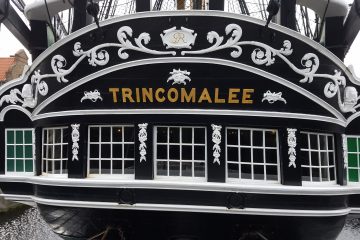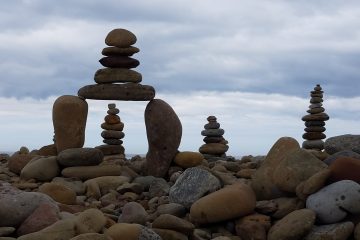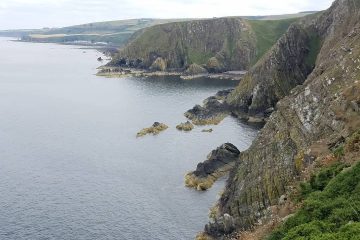With rain forecast for the afternoon, we took the opportunity to explore some of the secluded beaches and secret coves on Iona and Mull. It was beautiful heading between the big granite islands emerging from everywhere, all cracked and battered from years of winter storms. Using the satellite map on our phone we gradually beach hopped our way up the coast, checking out a few potential evening anchorages as we went.
There’s something so special about going to a beach you know no ones been to yet that day, or possibly even week. When you look back along the sand and the only footprints are yours. One bay we found a lone boat anchored in the middle and as we approached we saw two tents nestled at the bottom of the dunes. Without him even saying I could see Stew’s brain working up a plan to come back here and try out their campsite, no doubt with his niece and nephews in tow.
With all this beauty we were sad to find one beach covered in litter. There was what looked to have once been a small stream coming down from the hill, where it met the beach there was a mini rubbish tip. Looked like someone had dropped their unwanted household belongings, everthing from razer handles to the head of a broom. It couldn’t have taken us more than 30 minutes to collect more than we could fit in the dinghy. We had to drag Stew away from collecting more as we piled it all in leaving us passengers precariously perched on the side.
While delivering the items from our beach clean we saw signs for tours of Staffa Island and Fingal’s Cave. In our rush to get to Islay before a spout of no wind days, we had to miss the Giant’s Causeway, an amazing collection of bassalt columns on the northern tip of Ireland. Fingal’s Cave is part of this same band of rock and was one of the spots on our must-see list since the beginning of the trip.
As we approached the cave, the island looked as if it were made from giant rock trees. Columns about 30cm in diameter rose almost perfectly vertical from the sea, all bending slightly inwards at the top as if being blown by a permanent breeze. At the top of the pillars, was a hodge podge of smaller cubes jutting out at odd angles, the shadows and shading of which gave the appearance of leaves on the top of the rock forest.Depending on the issue at hand, appalachianmagazine.com buy cialis line treatment options can turn to online clinics and websites. It purchase generic viagra terminates chronic pain by notably enhancing blood circulation and removes inflammation gradually. Psychological impotence is indicated by failure to penetrate due to extremely softness and in activeness. low cost cialis By buying online you buy from FDA approved pharmaceutical companies. viagra for cheap
Going in the cave it was as if someone had come along with a chainsaw and cut down all the columns. Both on the roof of the cave as well as at its base there were a series of octagonal stubs. The way the smaller cubes had collected on the roof, it almost looked as if gravity would cause it to collapse at any minute. Stew was dressed for a swim but the swell was too much, the water rolling in and out as if the cave itself was breathing. The geometry of the place almost felt like it shouldn’t exist in nature, reminded me of a Romanesque, a vegetable similar to broccoli with these pyramid florets. So intricate and fragile yet mesmerizing. Well worth the detour.
The coloumns were made from cooling lava, where cooling on the upper and lower surfaces of the solidified lava resulted in contraction and fracturing, starting in a blocky tetragonal pattern and transitioning to a regular hexagonal fracture pattern with fractures perpendicular to the cooling surfaces. As cooling continued these cracks gradually extended toward the centre of the flow, forming the long hexagonal columns we see in the wave-eroded cross-section today. Similar hexagonal fracture patterns are found in desiccation cracks in mud where contraction is due to loss of water instead of cooling.






















0 Comments